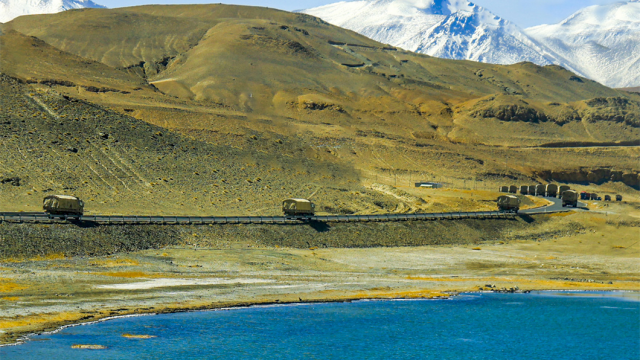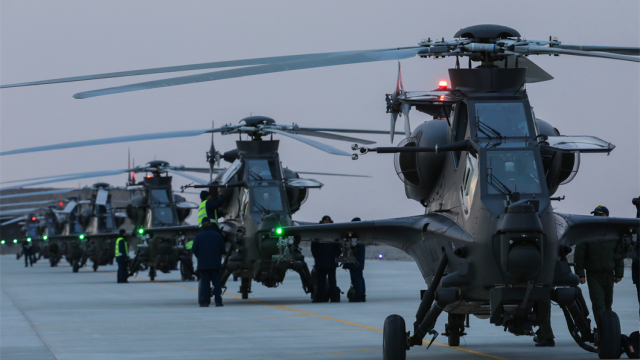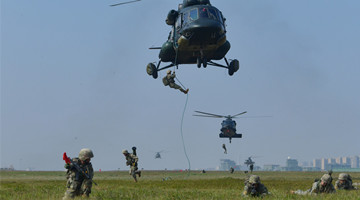The structural strategic conflict between the US-led NATO and Russia has existed for a long time and, as a result, it has been difficult to dispel their respective strategic concerns about each other.
However, with the goal of containing China, Trump hopes to promote reconciliation between the US and Russia. He has therefore organized the first meeting between the two heads of state, which will take place in a few days.
But the Trump-Putin summit can hardly solve the lack of mutual trust between the two countries. After all, the US and other Western countries have deceived Russia too many times.
China's PLA Daily reported on Monday that NATO recently released its latest Joint Air Power (JAP) Strategy as the new guide for NATO’s air combat forces. The new strategy specifies the new challenges facing NATO in the new international environment, and points out that the organization is losing its traditional air superiority in the face of opponents with systematic air combat forces.
Although Russia has encountered substantial economic difficulties in recent years, Putin has never relaxed the efforts in the field of national defense development. Over the past few years, the Russian Aerospace Forces have successively commissioned a series of advanced weapons including the Su-35 fighter jet, S-500, S-400 long-range anti-aircraft missile system and electronic warfare system. Moreover, it is currently testing the fifth-generation fighter jet Su-57. Russia is in no way inferior to NATO in terms of national defense capability.
There is no doubt that NATO’s latest strategy is targeted at Russia, as the alliance believes that the current Russian air defense system, electronic warfare and air combat forces pose a serious threat to NATO and will deprive it of its air superiority. NATO, which pursues absolute superiority, naturally feels uneasy about this and wants to restore the bilateral forces back to the situation that prevailed when the Cold War just ended.
For Russia, whose conventional forces stand at disadvantage, NATO’s air power is also a huge threat. Should a conflict break out between the two sides, NATO would be able to deploy about 5,000 fourth-generation fighter jets to the battlefield immediately, while Russia has less than 1,000 available fighters, most of which are outdated. That might be enough to deal with the militants in Syria, but definitely not enough to cope with NATO.
While the quantity of fighters is one thing, their quality is even more important. NATO has advanced fourth-generation fighters like Rafale and Tornado, and its allies such as the UK and Italy have multiple F-35 fighters, so they are able to form combat capability within a short period of time. In comparison, Russia only has one type of fifth-generation fighter –Su-57 – able to compete with the F-35.
While acknowledging NATO’s external superiority, we should not ignore its internal challenges, the first and fore-most one being its immense military expenses. The air force is an extremely expensive military branch for major countries. A single F-35 costs nearly USD100 million, which, combined with maintenance cost, would amount to an astronomical figure that is hard to bear even for a traditional power like the UK.
The second challenge is coordinated command. Previously the US, as the leading member of NATO, coordinated with NATO’s air power and gained great military superiority over Russia. But things have changed after Trump came into power. He then demanded that all allies quickly increase their military expenses to 2% of their GDP, otherwise the US would withdraw its military support for NATO.
NATO’s current vision for its air power transformation cannot fully determine the future change of its air power. How it will develop will depend on a string of factors, including NATO’s internal stability, the military and political game between NATO and Russia, and impacts of international factors and the international situation.
Disclaimer: The article is published on ifeng.com. It is translated from Chinese into English and edited by the China Military online. The information, ideas or opinions appearing in this article are those of the author and do not reflect the views of eng.chinamil.com.cn. Chinamil.com.cn does not assume any responsibility or liability for the same. If the article carries photographs or images, we do not vouch for their authenticity.









